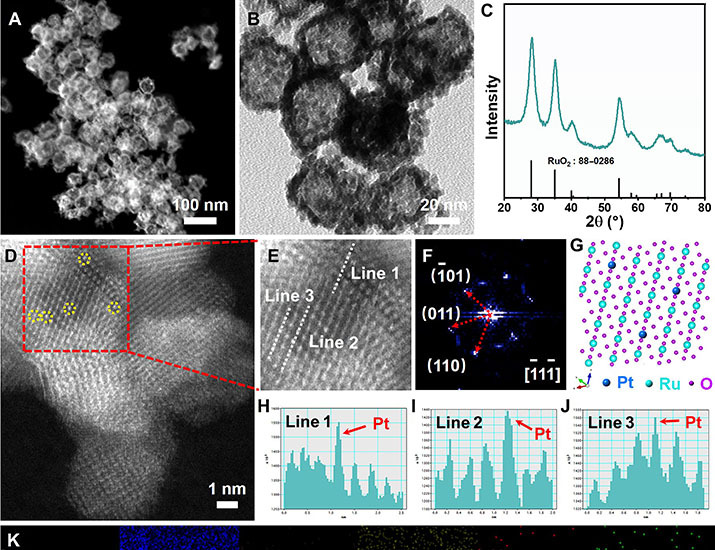Juan Wang:
ORCID: https://orcid.org/0000-0003-0536-4092
Role: ConceptualizationRole: Data curationRole: Formal analysisRole: Funding acquisitionRole:
InvestigationRole: MethodologyRole: Project administrationRole: ResourcesRole: SoftwareRole:
SupervisionRole: ValidationRole: VisualizationRole: Writing - original draftRole:
Writing - review & editing
Hao Yang:
ORCID: https://orcid.org/0000-0002-8241-6231
Role: Data curationRole: Formal analysisRole: InvestigationRole: MethodologyRole:
ResourcesRole: ValidationRole: Writing - original draftRole: Writing - review & editing
Fan Li:
ORCID: https://orcid.org/0000-0001-5098-0914
Role: ConceptualizationRole: InvestigationRole: MethodologyRole: ResourcesRole: ValidationRole:
Visualization
Leigang Li: Role: Writing - original draftRole: Writing - review & editing
Jianbo Wu:
ORCID: https://orcid.org/0000-0002-3574-5585
Role: Formal analysisRole: ValidationRole: VisualizationRole: Writing - review & editing
Shangheng Liu: Role: ConceptualizationRole: Formal analysisRole: MethodologyRole: Resources
Tao Cheng:
ORCID: https://orcid.org/0000-0003-4830-177X
Role: ConceptualizationRole: Formal analysisRole: MethodologyRole: SoftwareRole: Validation
Yong Xu:
ORCID: https://orcid.org/0000-0002-2525-7086
Role: ConceptualizationRole: Data curationRole: InvestigationRole: MethodologyRole:
ValidationRole: VisualizationRole: Writing - review & editing
Qi Shao:
ORCID: https://orcid.org/0000-0002-9858-0458
Role: ConceptualizationRole: Data curationRole: InvestigationRole: Software
Xiaoqing Huang:
ORCID: https://orcid.org/0000-0003-3219-4316
Role: ConceptualizationRole: Data curationRole: Funding acquisitionRole: MethodologyRole:
Project administrationRole: ResourcesRole: SupervisionRole: VisualizationRole: Writing
- original draftRole: Writing - review & editing
Journal ID (nlm-ta): Sci Adv
Journal ID (iso-abbrev): Sci Adv
Journal ID (publisher-id): sciadv
Journal ID (hwp): advances
Title:
Science Advances
Publisher:
American Association for the Advancement of Science
ISSN
(Electronic):
2375-2548
Publication date Collection:
March
2022
Publication date
(Electronic, pub):
02
March
2022
Volume: 8
Issue: 9
Electronic Location Identifier: eabl9271
Affiliations
[1
]State Key Laboratory of Physical Chemistry of Solid Surfaces, College of Chemistry
and Chemical Engineering, Xiamen University, Xiamen 361005, China.
[2
]Key Laboratory of Carbon Materials of Zhejiang Province, College of Chemistry and
Materials Engineering, Wenzhou University, Wenzhou 325035, China.
[3
]Institute of Functional Nano and Soft Materials (FUNSOM), Jiangsu Key Laboratory for
Carbon-Based Functional Materials and Devices, Soochow University, Jiangsu 215123,
China.
[4
]State Key Laboratory of Metal Matrix Composites, School of Materials Science and Engineering,
Shanghai Jiao Tong University, Shanghai 200240, China.
[5
]Center of Hydrogen Science, Shanghai Jiao Tong University, Shanghai 200240, China.
[6
]Future Material Innovation Center, Zhangjiang Institute for Advanced Study, Shanghai
Jiao Tong University, Shanghai 200240, China.
[7
]Guangzhou Key Laboratory of Low-Dimensional Materials and Energy Storage Devices,
Collaborative Innovation Center of Advanced Energy Materials, School of Materials
and Energy, Guangdong University of Technology, Guangzhou 510006, China.
Author notes
[†]
These authors contributed equally to this work.
Author information
Article
Publisher ID:
abl9271
DOI: 10.1126/sciadv.abl9271
PMC ID: 8890715
PubMed ID: 35235348
SO-VID: a01ed22e-6368-46c2-ae27-6b9fa71a2e03
Copyright © Copyright © 2022 The Authors, some rights reserved; exclusive licensee American Association
for the Advancement of Science. No claim to original U.S. Government Works. Distributed
under a Creative Commons Attribution NonCommercial License 4.0 (CC BY-NC).
License:
This is an open-access article distributed under the terms of the
Creative Commons Attribution-NonCommercial license, which permits use, distribution, and reproduction in any medium, so long as the
resultant use is
not for commercial advantage and provided the original work is properly cited.
Funded by:
FundRef http://dx.doi.org/10.13039/501100001809, National Natural Science Foundation of China;
Award ID: 22025108
Funded by:
FundRef http://dx.doi.org/10.13039/501100001809, National Natural Science Foundation of China;
Award ID: 21903058
Funded by:
FundRef http://dx.doi.org/10.13039/501100001809, National Natural Science Foundation of China;
Award ID: 22105146
Funded by:
FundRef http://dx.doi.org/10.13039/501100001809, National Natural Science Foundation of China;
Award ID: 51802206
Funded by:
FundRef http://dx.doi.org/10.13039/501100001809, National Natural Science Foundation of China;
Award ID: 22121001
Funded by:
FundRef http://dx.doi.org/10.13039/501100001809, National Natural Science Foundation of China;
Award ID: 21875137
Funded by:
FundRef http://dx.doi.org/10.13039/501100001809, National Natural Science Foundation of China;
Award ID: 51521004
Funded by:
FundRef http://dx.doi.org/10.13039/501100001809, National Natural Science Foundation of China;
Award ID: 51420105009
Funded by:
National key R&D program of China;
Award ID: 2020YFB1505802
Funded by:
FundRef http://dx.doi.org/10.13039/501100008804, Ministry of Science and Technology, Government of the People?s Republic of Bangladesh;
Award ID: 2017YFA0208200
Funded by:
FundRef http://dx.doi.org/10.13039/501100008804, Ministry of Science and Technology, Government of the People?s Republic of Bangladesh;
Award ID: 2016YFA0204100
Funded by:
Natural Science Foundation of Jiangsu Higher Education Institutions;
Award ID: 17KJB150032
Funded by:
Natural Science Foundation of Jiangsu Higher Education Institutions;
Award ID: BK20190810
Funded by:
Natural Science Foundation of Jiangsu Higher Education Institutions;
Award ID: SZS201708
Funded by:
FundRef http://dx.doi.org/10.13039/501100002949, Government of Jiangsu Province;
Award ID: JNHB-106
Funded by:
FundRef http://dx.doi.org/10.13039/501100012246, Priority Academic Program Development of Jiangsu Higher Education Institutions;
Award ID: 2021B1515020081
Funded by:
Program for Jiangsu Specially Appointed Professors thanks China Postdoctoral Science
Foundation;
Award ID: 2019M660128
Funded by:
Collaborative Innovation Center of Suzhou Nano Science and Technology The;
Award ID: BL14W1
Funded by:
Xiamen University the Innovation Program of Shanghai Municipal Education Commission
Project;
Award ID: 2019-01-07-00-02-E00069
Funded by:
FundRef http://dx.doi.org/10.13039/501100013314, Higher Education Discipline Innovation Project;
Award ID: B16032
Funded by:
Center of Hydrogen Science and Joint Research Center for Clean Energy Materials from
Shanghai Jiao Tong University and Guangzhou Key Laboratory of Low Dimensional Materials
and Energy Storage Devices;
Award ID: 20195010002

